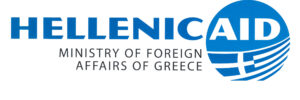Foreign aid from official donors in 2018 fell 2.7% from 2017, with a declining share going to the neediest countries, according to preliminary data collected by the OECD. The drop was largely due to less aid being spent on hosting refugees as arrivals slowed and some tightening of the rules on which refugee costs can come out of official aid budgets took place.
Official development assistance (ODA) from the 30 members of the OECD’s Development Assistance Committee (DAC) totalled USD 153.0 billion in 2018, as calculated using, from now on, a new “grant-equivalent” methodology agreed upon by the DAC in 2014, as a more accurate way to count the donor effort as regards the provision of development loans. Under the “cash-flow basis” methodology used in the past, 2018 ODA was USD 149.3 billion, down 2.7% in real terms from 2017. Excluding aid spent on processing and hosting refugees, ODA was stable from 2017 to 2018.
Using the cash-flow basis ODA figure to compare 2018 with 2017 shows that bilateral ODA to the least-developed countries fell by 3% in real terms from 2017, aid to Africa fell by 4%, and humanitarian aid fell by 8%. 2018 ODA outflows rose in 17 donor countries, with the biggest increases in Hungary, Iceland and New Zealand. ODA outflows fell in 12 countries, due in some to fewer refugee arrivals, with the largest declines in Austria, Finland, Greece, Italy, Japan and Portugal.
The 2018 ODA release marks the adoption of the “grant-equivalent” methodology, which would provide a more realistic comparison between grants, which made up 83% of bilateral ODA in 2018, and loans, which were 17%. Whereas previously the full face value of a loan was counted as ODA and repayments were progressively subtracted, the grant-equivalent methodology means only the “grant portion” or the amount the provider gives away by lending below market rates, counts as ODA. The way that loan parameters are set implies that donors can henceforth only provide loans to poor countries on very generous terms. The new grant-equivalent figure is not comparable with historical ODA data and so the 2018 figures start a new grant-equivalent ODA series.
More information: https://www.oecd.org/newsroom/development-aid-drops-in-2018-especially-to-neediest-countries.htm
